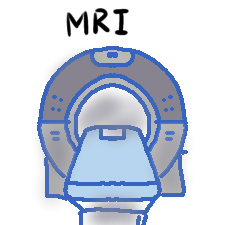The Possibilities of Fusion Energy
- Science Holic
- Nov 30, 2020
- 4 min read
Author: Patrick Lin
Editors: Shannan Tan and Kira Tian
Artist: Abhinaya Vijayanand
Nuclear fusion is a process where energy is generated by combining two nuclei of atoms to form a larger nucleus; fusion reactors are the devices created to harness the power of the fusion reaction energy. Fusion research was initially done by the U.S. and Union of Soviet Socialist Republics (USSR); nowadays, fusion research is done by a handful of countries in an international effort, due to the high cost and complexity of the devices needed to create the fusion reactions.
The sun and other stars generate energy using fusion reactions: hydrogen atoms are fused together into helium. The hydrogen is first heated to an extremely high temperature so that the hydrogen gas can turn into plasma, in which negatively charged electrons of the atom separate from the positively charged nucleus. The hydrogen nuclei are then forcefully pulled together from repulsive forces coming from the positive nucleus. When the nuclei are close enough, the attractive nuclear forces that bind protons and neutrons together outweigh the repulsive forces, allowing the nuclei to fuse together, creating helium. This is possible because the sheer mass of stars creates a powerful enough gravitational force that allows fusion to take place.
On earth, fusion reactions can be created by heating fusion fuel to over 50 million degrees Celsius, keeping it stable under intense pressure for enough time that the nuclei can fuse. As of right now, the easiest fuel to use is deuterium (hydrogen 2) and tritium (hydrogen 3). Deuterium is a naturally occurring isotope of hydrogen that is very common; tritium is a naturally occurring but radioactive isotope of hydrogen with a short half-life of 12.32 years. Although tritium is relatively rare compared to deuterium, tritium can be bred using lithium 6. In a deuterium-tritium fusion reaction, the nuclei of the atoms bond together to create helium and a neutron as a byproduct. A fusion reactor makes use of the neutron byproduct by having a lithium blanket surrounding the core of the reaction. The deuterium and tritium fuse to create the neutron with enough kinetic energy to heat up the lithium, creating energy and making more tritium.
Currently, the two main approaches being researched are magnetic confinement and inertial confinement. Magnetic confinement uses magnetic fields to contain the hydrogen plasma, hence the name magnetic confinement. Since the electrons are separated from the nuclei, both are electrically charged so they will follow the magnetic field lines in order to prevent the plasma from touching the reactor walls. The most effective magnetic field configuration is a doughnut-shape: the magnetic field curves to create a closed-loop. The most promising design for magnetic confinement is a tokamak: the largest one is the International Thermonuclear Experimental Reactor (ITER,) a joint effort by Japan, India, the EU, the USA, Russia, China, and South Korea being built in France. Inertial confinement uses lasers that target a small deuterium and tritium fuel pellet, heating the outside of the pellet, which causes the outer layer to explode, compressing the inner layers of the pellet. The core of the pellet would be compressed up to 1,000 times its initial density, creating the conditions for fusion to occur. The energy released from the fusion in the core would then heat the surrounding fuel, creating a chain reaction. The largest inertial confinement reactor is the National Ignition Facility (NIF) in Livermore, California.
Like nuclear fission plants, fusion plants can significantly reduce the environmental damages that result from energy creation. Since neither one uses fossil fuels to generate energy, they would not release any carbon dioxide or other greenhouse gases into the environment. But unlike fission, fusion power requires more advanced technology and larger and more expensive reactors. Despite this fact, fusion is more sustainable because it uses hydrogen and breeding tritium that is much cheaper and easier to use than uranium. Both methods create some sort of nuclear waste, but fusion waste has a shorter half-life than fission waste; fission wastes can last for thousands of years. Fusion reactors also do not cause damaging accidents. The plasma must be maintained at an extremely high temperature using external heating in order to fuse; if the plasma were to leak from the containment, it would cool down with the only hazard being tritium which can only last up to 125 years after it is created.
Although fusion power has a lot of potential as a source of clean energy, the technology needs to be further tested and developed before commercial use. Scientists hope that projects such as the ITER will demonstrate that fusion reactors can actually produce more energy than it consumes. No one knows whether fusion will actually work as a viable energy source, but we are getting closer to finding out. All that is needed now, is funding and technological advancement.
Citations:
“Assembly of World's Largest Fusion Reactor Begins in France.” Assembly of World’s
Largest Fusion Reactor Begins in France, Al Jazeera Media Network, 28 July 2020,
in-france.
Fusion - Frequently Asked Questions, IAEA, 12 Oct. 2016,
www.iaea.org/topics/energy/fusion/faqs.
“Nuclear Fusion Power.” World Nuclear Association, World Nuclear Association, July 2020,
fusion-power.aspx.
Tritium Fact Sheet. Mar. 2011, hps.org/documents/tritium_fact_sheet.pdf. Accessed 18 Oct.
2020.







Comentários